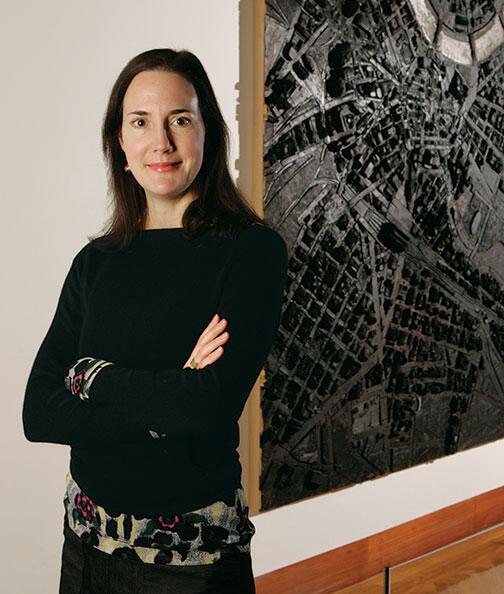Q&A: Curator Kelly Baum: Acquiring Modern Art
A ‘safe’ collection is becoming a little more risky as it grows
Kelly Baum is the Princeton art museum’s first curator of modern and contemporary art — works from 1945 to the present. Programs and acquisitions from this period are a priority, says museum director James Steward. “To some degree, we are making up for other interests that prevailed in the past,” he says. As a university museum, Steward adds, “we have to be committed to the art of our own time as well as of the past.” PAW spoke with Baum this winter.
What did you find when you came to Princeton in 2007?
There was an existing collection of modern and contemporary art. Works were entering the collection as a result of efforts by former directors and gifts from donors, but there was no overarching curatorial vision because there wasn’t a curator. There wasn’t a consistent exhibition program in modern and contemporary art. And acquisitions weren’t made deliberately with some larger vision or goal in mind.
At the same time, there was growing interest among students and faculty. And there was a group of donors — Princeton alums such as Preston Haskell ’60 and Gene Locks ’59 and Sueyun Locks — who were collecting modern and contemporary art and who wanted very much to see the museum enter the 21st century.
How has the department grown?
I’ve started an international artist-in-residence program that’s endowed by Sarah Elson ’84. I’ve purchased 49 works of art for the museum’s collection and helped shepherd an additional 43 gifts from donors. A few of the works we’ve added include a magnificent assemblage by Matthew Day Jackson, collages by Wangechi Mutu, and a video installation by Doug Aitken. I’ve curated 12 exhibitions for the museum. I’ve played a role in launching the campus-art initiative, which commissions new works of art by major artists for campus buildings. We have two galleries devoted to modern and contemporary art, and I reinstall those every six to 12 months.
As the museum has purchased new works of art, how have you changed the shape of the collection?
It wasn’t just that we had a small collection of modern and contemporary art — which we still do, compared to photography, prints and drawings, Renaissance art. But we had a very skewed collection. It was very safe; it wasn’t risky. It was dominated by the work of white men, and so it lacked diversity in terms of the artists, in terms of the works of art.
I’ve vastly increased the number of women artists we’re presenting in the collection. I’ve also added non-American artists — artists from Latin America, Europe — and artists of color. There weren’t works of art in alternative media; it was primarily paintings and drawings. I’ve acquired works in a variety of different media, in video and film, collage, mixed media. So I’ve changed the character of the collection. Some of the artists are what I would consider canonical artists, recognized and celebrated by critics and curators. Others are emerging, and so they are right in the middle of their careers. Interview conducted and condensed by K.F.G.













No responses yet